Liesl | APRIL 28
During the years of the authoritarian regime installed in Austria in 1934 (“Austrofascism”), the police prison at Rossauer Lände in Vienna (nicknamed “Liesl” by the locals) had already been used as a lockup not only for criminals but also for political dissidents. After the annexation of Austria by Nazi Germany on March 12, 1938 (“Anschluss”), the first 150 Austrians were taken to the Dachau concentration camp from this notorious prison. Some, like Edmund Wachs, were held there in “protective custody,” a convenient tool used by the nazis to rid themselves of Jews and political opponents, since it could be imposed arbitrarily and left the prisoners little or no recourse to legal support. In this postcard, Edmund’s brother, the attorney Dr. Karl Wachs, reassures Edmund that he is doing everything he can to press his case and asks him for patience.
Our name should perish with us | APRIL 24
The diary of Dr. Hertha Nathorff (née Einstein) paints a vivid and at times nightmarish picture of the Jewish physician’s experiences in Nazi Germany. On April 24, she describes a visit with her parents in her native Laupheim in Swabia. Many Jewish shops had been sold, and their owners had emigrated. The Nazis’ efforts to malign and isolate the Jews had been so successful that passers-by were afraid to greet her. Her father had informed her that he was not going to sell the company which had been in the family’s possession for four generations and that he would prefer that it perish along with their name. The degree of isolation experienced by German Jews at the time is also evident in another episode mentioned in the diary: Dr. Nathorff is amazed at the fact that her former professor had the courage to send her regards through a patient.
Persecution in Austria, release from Dachau | APRIL 14
Little more than a month after the Nazi takeover of Austria, a cascade of new regulations and actions taken by the new regime leaves little room for optimism. The Jewish Telegraphic Agency reports for April 14 from Vienna that Jews within 50 kilometers of the Czechoslovak border are to be expelled. Nazi commissars will be put in charge of Austrian businesses at the latter’s expense. According to the JTA, in the case of hundreds of Jewish-owned businesses, this provision has already been enforced. Finally, a law has been introduced establishing new procedures for determining the racial status of illegitimate children. The one positive item in this substantial dispatch is the prospect that all Jews currently interned at the Dachau concentration camp will not only be released but will also receive permits to enter Palestine.
A special 70th birthday gift | APRIL 13
Heinrich Stahl, chairman of the Berlin Jewish Community since 1934, was heavily involved in the work of the various Jewish relief organizations, for which there was growing need as Nazism took hold. On April 13, 1938, his 70th birthday, he received a gift from the Ahawah Children’s Home, a photo album which showed the wide range of activities pursued by the charges of this exceptional institution (see March 17). The album included several photographs from the Ahawah’s new branch, which had been opened in Palestine in 1934. A heartfelt warmth and gratitude shine through this rhymed dedication thanking Stahl for his service to the community.
Hope for US leadership | APRIL 4
On April 4, 1938, Arthur Sweetser, a member of the Secretariat of the League of Nations, met with US President Franklin D. Roosevelt. During the meeting, the two discussed the situation of German and Austrian Jews urgently seeking ways to emigrate. Roosevelt brought up the idea of an international conference. His reasoning was simple: only under determined US leadership could the problem be solved and other nations be convinced to take in Jewish refugees. It remains disputed whether the idea of a joint debate on the situation of the Jews under the Nazi regime came from Roosevelt himself or rather from high-ranking State Department officials.
Recommendation from Karl Bonhoeffer | MARCH 31
Prof. Karl Bonhoeffer, a psychiatrist and neurologist as well as the father of two prominent opponents of the Nazi regime, Klaus and Dietrich Bonhoeffer, taught at Friedrich Wilhelm University in Berlin and was in charge of the Department for Mental and Neurological Diseases at the Charité Hospital. In this letter of recommendation, written in English for use in exile, Bonhoeffer praises the extraordinary achievements of his Jewish colleague, Dr. Herta Seidemann. While his attitude toward certain Nazi programs (such as the forced sterilization of carriers of certain congenital diseases and euthanasia) remains controversial, his efforts on behalf of several Jewish colleagues are indisputable.
No coming back | MARCH 30
In the wake of Austria’s annexation by Nazi Germany, the Polish parliament (“Sejm”), fearing the return of up to 20,000 Polish citizens from Austria, passed a bill according to which Poles who had lived abroad for more than five years were to lose their citizenship. The situation of the Jews had improved somewhat under the Piłsudski government (1926–1935), but after the marshal’s death, especially in the atmosphere created by the “Camp of National Unity” (from 1937 onward), antisemitism was resurgent. Universities applied quotas to Jewish students and introduced “ghetto benches” for them, Jews were held responsible for the Great Depression, Jewish business were boycotted and looted, and hundreds of Jews were physically harmed, some killed.
A second Salzburg? | MARCH 29
The Austrian-born theater and film director Max Reinhardt emigrated to the US in October 1937, accompanied by his wife Helene Thimig, an actress. By introducing technical innovations and elevating the position of the director, Reinhardt played a pivotal role in the development of modern theater. With his production of H. von Hoffmannsthal’s “Jedermann” in 1920, he became one of the co-founders of the Salzburg Festival. Shortly after he settled down in the US, plans emerged to found “another Salzburg” festival in California. This time, he wrote his friend Arturo Toscanini, he would be working “under more favorable climatic and political conditions, and perhaps with greater financial means.” Among his achievements in the US were staging Werfel’s “The Eternal Road” (1937) and founding the Max Reinhardt Workshop for Stage, Screen and Radio, a theater and film academy in Hollywood (1937–1939). He did not think very highly of US audiences.
As far away as possible | MARCH 28
More than two weeks had passed since the Nazi takeover in Austria. The initial shock and disbelief among Jews had given way to despair and panic. Many reacted by seeking information about visa requirements for countries like the United States, Great Britain and Australia, which promised a safe haven and sufficient distance from the dramatic new situation in Austria. Between March 24 and 28, the Australian consulate alone received 6,000 applications for immigration—a number which considerably exceeded the country’s official immigration quota.
Parental Pride | MARCH 27
Wilhelm Hesse was the son of an orthodox business man. He resided in Hamburg with his wife Ruth and his two little daughters, Helen and Eva, whose early years he recorded in diaries that he kept for the children. The entries are interspersed with references to Jewish holidays and photographs of the children. In this entry, he documents proudly and in detail the progress of his daughter Helen, who is not yet five years old at this time. A lawyer with a doctorate, Hesse had been laid off already in April 1933.
Denaturalized | MARCH 26
The passage in July 1933 of a law allowing the government to revoke the citizenship of those naturalized after the end of WWI had given Nazi officials a tool to deprive “undesirables” of their citizenship. The law targeted the Nazis’ political adversaries as well as Jews; 16,000 Eastern European Jews had gained German citizenship between the proclamation of the republic on November 9, 1918 and the Nazi rise to power in January 1933. Among those whose names appear on the expatriation list dated March 26, 1938 are Otto Wilhelm, his wife Katharina and the couple’s three children, residents of Worms and all five of them natives of Germany.
Lost at home | MARCH 25
In another dramatic report from Vienna, the Jewish Telegraphic Agency describes panicked Jews flocking to the US Consulate hoping in vain to receive some kind of support. Especially prominent Jewish citizens faced harassment and arrest by the secret police. Austrian Jewish leaders were forced to inform the police about their activities, while their German counterparts were unable to come to their support due to border restrictions. The situation of thousands of Jewish actors had become so desperate that even the Nazi representative of the Austrian Theater Guild acknowledged it and permitted a campaign in their support.
An ordinary eulogy in a time of immeasurable loss | MARCH 24
A mere 20 years had passed since the end of World War I, during which Dr. Max Kirschner, a Frankfurt physician, had been decorated with the Iron Cross—remarkably, for extending aid to enemy infantrymen. Yet the fact that Kirschner had fought in the War as one of 100,000 German Jews, 12,000 of whom lost their lives, did not in the long run improve his standing with the authorities. In his eulogy for Hedwig Wallach, scion of an old Frankfurt family, he praised the deceased’s quiet devotion to her husband, her lively interest in her children and the quiet bravery with which she had borne her illness.
Soma Morgenstern | MARCH 23
Soma Morgenstern held a doctorate in law, but he preferred making a living as a writer, authoring feuilletons on music and theater. Born in Eastern Galicia and fluent in several languages, including Ukrainian and Yiddish, he chose German for his journalistic and literary endeavors. After his dismissal in 1933 from the Frankurter Zeitung, whose culture correspondent he had been while based in Vienna, he barely managed to stay afloat with occasional journalistic work. The annexation of Austria by Nazi Germany made his situation entirely untenable. He was forced into emigration, leaving behind his wife, a child, and many manuscripts. By March 23 he had made his way to safety in Paris, where he stayed at the Hôtel de la Poste with another famous Galician exile, his old friend, the author Joseph Roth.
Women’s Rights are Human Rights | MARCH 22
Since its founding in 1904, the League of Jewish Women had worked to ensure the dignity and independence of Jewish women and especially to protect them from sexual exploitation by facilitating professional training. By 1938, another issue had come to the fore: emigration. On March 22, 1938, the Group of Professional Women within the League, represented by Dr. Käthe Mende, hosted a discussion for “female youth” about questions of career and emigration. The guest speaker was Lotte Landau-Türk, and the discussion was moderated by Prof. Cora Berliner, a former employee in the German Department of Commerce and a professor of economics who had been dismissed from public service after the Nazi rise to power in 1933.
Anneliese’s daily struggles | MARCH 21
In March 1938, Anneliese Riess was living in Rome, Italy. In addition to keeping in touch with her sister, Else (see entry from February 5), she corresponded with her parents in Berlin. As in other families scattered across several countries, the letters of the Riess family deal with everyday events and practical information about emigration. With her Italian visa about to expire, Anneliese is trying to find a new safe haven. Through their network of friends, her mother has learned that there might be a position for Anneliese in Lund, Sweden. In this letter, she advises her to find out more about it.
Branded | MARCH 20
This stereoscopic image from March 1938 shows a lingerie store in Vienna with a sticker that says “Jewish business” attached to its window. Immediately after the German Army’s entry into Austria, celebrated in many places, on March 12, 1938, the local Jewish population began to suffer from the same kind of defamation as German Jews had since 1933. The picture is part of the Sammlung Schönstein (Schönstein Collection) at the German Historical Museum. At the beginning of the 1930s, Otto Schönstein (1891–1958) of Nuremberg established his Raumbild Verlag, which published albums of stereoscopic photographs. In 1937, Heinrich Hoffmann, Hitler’s “personal photographer,” became involved in the publishing house, which was showing signs of economic difficulties, and used it for the dissemination of NS propaganda.
Aryanization | MARCH 19
After more than one hundred successful years in business, the cotton weaving mill M.S. Landauer in Augsburg announces the sale of the company. Throughout the Nazi period, as part of the program of “Aryanization”, Jews were coerced into selling their property to non-Jews, usually significantly below market value. In some cases, owners preempted official orders by selling to a trusted business associate, which did not generally help them avoid major losses. Ironically, the founder of the F.C. Ploucquet company, which now owned the plant, had been of Huguenot extraction and thus himself belonged to a community that had experienced severe persecution.
A new mission for World Jewry | MARCH 18
The entire front page of Bratislava’s German-language religious-Zionist “Allgemeine Jüdische Zeitung” is dedicated to the Anschluss. Jews are called upon to stand by their Austrian coreligionists. An anonymous source notes the impoverished state of many Jews in Austrian lands and the resulting need to restructure social services as well as address the increasingly urgent issues of occupational retraining and emigration. The reader is reminded that Austria is still a member of the League of Nations and that Austrian law stipulates equal rights for religious and national minorities. Among other sources quoted is the British Under-Secretary of State for Foreign Affairs, Butler, who reports having received assurances that the German government would “endeavor to achieve a moderation” of its policy towards minorities. The paper also reports that the President of the World Jewish Congress, Rabbi Wise, has appealed to the League of Nations to help Austrian Jewry. The rest of the picture is bleak: newspapers suspended, prominent Jews arrested, a Jewish theater closed, Jewish physicians dismissed, and other chicanery. The paper calls upon Jews everywhere to come to the aid of their Austrian brethren.
House of love | MARCH 17
The notoriously authoritarian Prussian education system had traditionally aimed for obedience and discipline, often breaking children’s wings early on. In the “Ahawah” (Hebr. for “love”) Children’s Home on Auguststraße in Berlin’s central borough, a different spirit reigned: children shared in decision-making through a “Children’s Council”, the goal being to transform them into citizens rather than subjects. Corporal punishment was forbidden and employees were encouraged to create the atmosphere of a home. Beate Berger, a nurse and head of the children’s home since 1922, took a group of children with her when she emigrated to Palestine in 1934 and returned to Germany many times in the ensuing years to rescue more children. The photos show costumed children at the Purim celebration of the children’s home.
Colleagues across continents | MARCH 16
Having barely begun his career as a teacher at the Goethe-Gymnasium in Frankfurt/Main, Hans Epstein lost his job shortly after the Nazi rise to power in 1933. After a brief intermezzo as a teacher at the famous “Philanthropin” in Frankfurt/Main, a progressive Jewish school with the motto “For Enlightenment and Humanity”, he became a co-founder of the “Anlernwerkstatt”, which prepared Jewish youngsters for emigration to the US. The mathematician Otto Toeplitz, a passionate educator who had lost his position at the University of Bonn in 1935, was now teaching children and organizing the emigration of students to the United States. In this letter, Epstein asks Toeplitz for a letter of recommendation and for contacts in the United States that might be useful for his endeavors.
Hitler’s Homecoming | MARCH 15
From March 12 to 14, Hitler visited Linz, which he had considered his home town since his adolescence there. In his address to the local populace he stylized himself as the enforcer of the people’s will and invoked the German soldiers’ “willingness to sacrifice” and the “greatness and glory” of the German people. While many reacted with enthusiasm, others were seized by fear. In his diary, Adolph Markus captures the anxious atmosphere at his workplace in Linz days after the “Anschluss.”
A taste of home | MARCH 14
After the tribulations of their forced emigration, often accompanied by a loss of status, property, and basic faith in humanity, German Jews might not have been expected to feel particularly nostalgic for their former home. This ad from the Aufbau, the New York-based German-Jewish paper published by the German-Jewish Club, shows that nevertheless, Jewish refugees from Nazi Germany were not necessarily in a hurry to give up their eating habits.
Discrimination and arrests | MARCH 13
After their triumphant entry into Austria, the Nazis lost no time in intimidating the country’s Jews and forcing them out of positions of influence and out of society at large. Prominent bankers and businessmen were arrested, other Jews—especially those employed in fields that were considered “Jewish,” such as the theater and the press—removed from office and replaced by “Aryans.” At the same time that the atmosphere in Austria became unbearably hostile towards Jews, organizations aiming to facilitate Jewish emigration to Palestine were raided and it was announced that the passports of “certain people” would be voided. It bears mentioning that the number of Jews in Austria in March 1938 was about 206,000—no more than 3% of the total population.
The Unthinkable | MARCH 12
In spite of numerous signals that Austria was changing its political course, the Anschluss on March 12 caught many Austrian Jewish citizens by surprise. One of them was 25-year-old law graduate Paul Steiner. As is often the case with witnesses of cataclysmic historical events, he did not understand the magnitude of the change until it was a fact. On the day of the Anschluss, he expressed feelings of disbelief in his diary. Within just a few hours of the historical change, Steiner’s love and commitment to Austria changed into a feeling of indifference and alienation. Not seeing any hope in the new Austrian political reality, he made the quick but rational decision to leave his native land as soon as possible.
Follow a 24-hour multimedia reconstruction of the Annexation of Austria online at www.zeituhr1938.at
Live from March 11, 2018, 18:00 until March 12, 2018, 18:00 (Central European Time)
Calm before the storm | MARCH 11
Adolph Markus lived in Linz, Austria with his wife and two children. One month before the “Anschluss” (the annexation of Austria by Nazi Germany on March 12, 1938), he started keeping a diary which offers a gripping account of the growing tension. The situation was changing from day to day, and the Jews could only guess what would happen next. One day before the annexation, Markus wrote in his diary: “The streets are strangely calm. ‘Calm before the storm.’”
Follow a 24-hour multimedia reconstruction of the Annexation of Austria online at www.zeituhr1938.at
Live from March 11, 2018, 18:00 until March 12, 2018, 18:00 (Central European Time)
Preparing for Motherhood | MARCH 10
In response to numerous requests, the Prussian State Association of Jewish Congregations, a voluntary association founded in 1921, decided to provide gifts to girls in parallel with the religious books given to boys upon becoming B’nai Mitzvah. While the books given to boys were aimed at deepening Jewish knowledge, the book offered to girls, Jewish Mothers by Egon Jacobsohn and Leo Hirsch, offered biographical sketches of the mothers of Jewish luminaries including Theodor Herzl, Walter Rathenau, and Heinrich Heine. As early as the the 19th century, reform-oriented synagogues in Germany began offering a collective “confirmation” for boys and girls. In some places, an individual ceremony for girls was customary, but there was no such thing as the modern bat mitzvah ceremony in 1938.
All hands on deck | MARCH 9
The newspaper Die Stimme was considered the official mouthpiece of the National Zionist Committee in Austria. In its March 9 issue, it quotes a JTA report on the conference of the World Zionist Executive in London. Although tensions in Austria were running high, the conference had other pressing matters on its agenda, such as immigration to Palestine and changes in the British attitude towards it. Among the proposals discussed were lowering the price of the shekel in a number of Eastern European countries and establishing coordinating councils for Zionist activities.
Family bonds | MARCH 8
Charles Manshel, a wealthy businessman and himself a native of Austria, promises his cousin in Baden near Vienna to prepare affidavits for her and her family once he has all the required personal information. The letter shows Manshel’s sincere efforts to not only pave the way to immigration for his relatives but also do something for the professional integration of his niece’s husband, Dr. Eduard Ehrlich. Manshel was no stranger to hardship himself, having provided for his family since his father’s premature death when he was 16 years old.
Tie Game | MARCH 7
The soccer team Hakoah Wien’s match against SV Straßenbahn Wien, the sports club of the Vienna tramway company, ended in a 2:2 tie on March 7, 1938. Hakoah was part of the famous Viennese Jewish sports club, Sportverein Hakoah Wien. The club had been established in 1909 as a result of the changing attitude towards the body and health in the liberal Jewish community. This membership card belonged to one of the club’s foremost coaches, the swim coach Zsigo Wertheimer. Wertheimer had coached Ruth Langer, who famously refused to join the Austrian Olympic team in 1936, when she was just 15 years old.
Antisemitism in Austria | MARCH 6
In 1933, the “Fatherland Front” had been established as the sole representative body of Austrian citizenry and as a replacement for parliamentary democracy. It had strong ties to the Catholic Church and was deeply antisemitic. Nevertheless, there were Jews among its ranks, and it saw itself as opposed to the (Protestant-dominated) Nazis. When Nazi groups, clearly emboldened by their recently improved status, took to the streets, proudly parading with swastikas, the Jewish Telegraphic Agency reported on an antisemitic demonstration at the University of Vienna, an institution where anti-Jewish sentiment had been rampant for centuries. On the same day, the news agency informed its readership about counter demonstrations organized by the Vaterländische Front.



